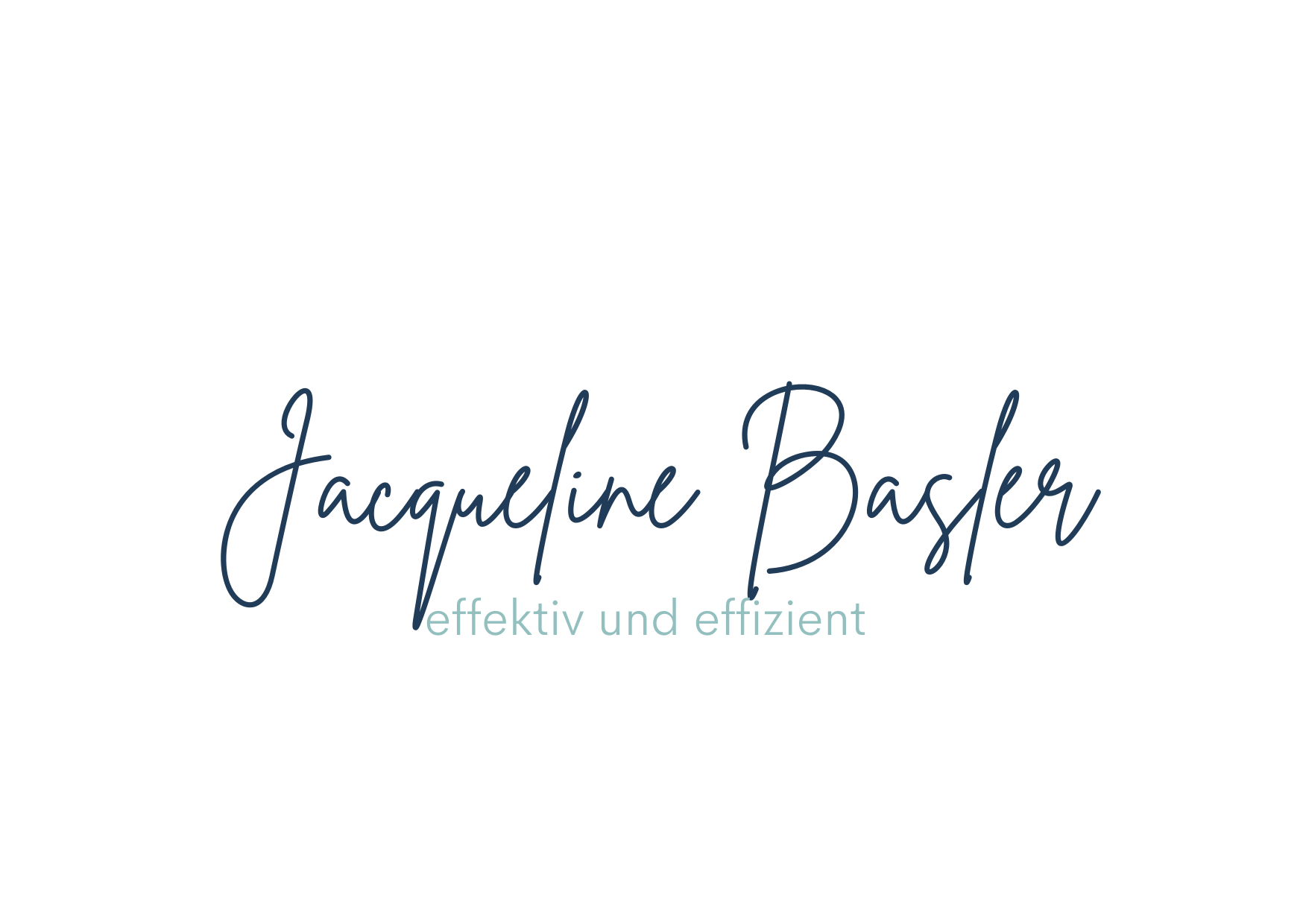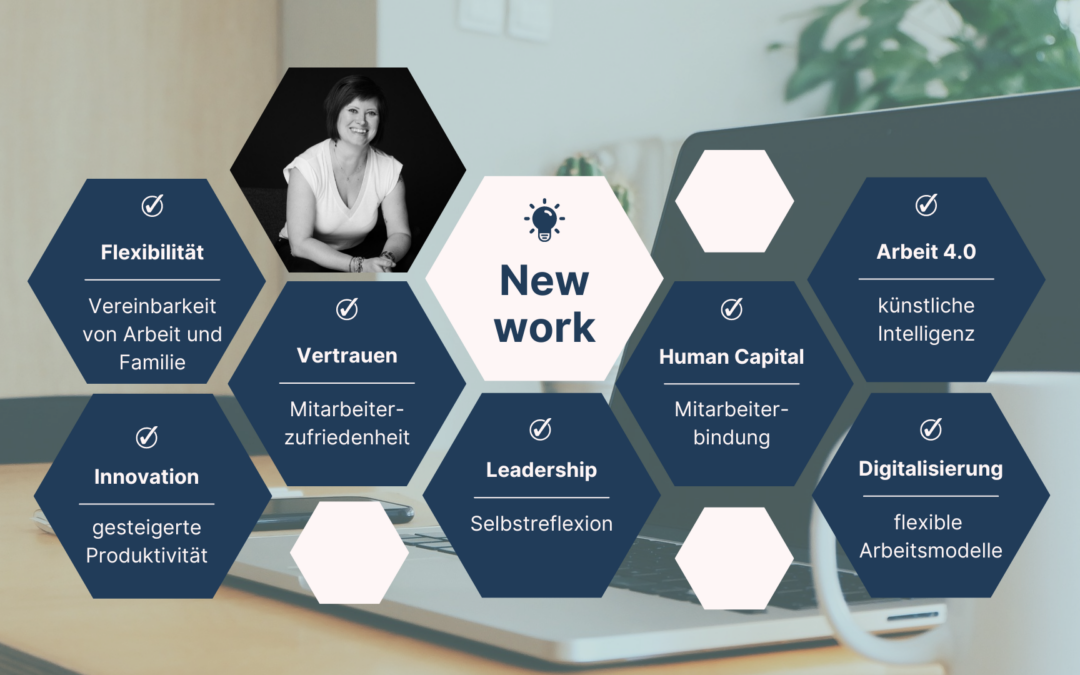Working to live instead of living to work!
Today I was at a network meeting of the “virtual assistants” in Switzerland and we met in person again for a change. I used the train journey from Rheinfelden to Zurich and back to gather ideas for this blog article. I can be much more creative on such outings than when I’m sitting at my desk at home. On the way back, I realized that our way of working is nothing other than New Work and that it is based on different life circumstances. Some are in permanent employment and thus increase their workload, others do this in order to be able to travel better. I started as a virtual assistant so that I could better combine my studies, work and family life. The reasons are different, but for everyone it means the same thing: a new form of work organization with flexible working models.
The New Work megatrend has been developing for years and then celebrated its surprising breakthrough as a result of a global pandemic. A few years ago, there were already companies that celebrated unconventional working, for example with quiet oases, shopping facilities on their own campus, childcare options and a table football table in the break room. With the pandemic, however, working from home, video calls and digital solutions were suddenly essential in order to be able to work. And afterwards? Back to the beginning or build on it? Opinions are currently divided, with some wanting to restore the old conditions and others diligently expanding the new working models.
What does New Work mean?
It is a fact that our world is changing rapidly and digital progress is omnipresent. Generative AI and new AI tools such as Chat-GPT, Midjourney and others are ushering in a new era for “artificial intelligence”. New Work is a generic term for far-reaching changes in the world of work: working to live instead of living to work. New Work, also known as “Work 4.0”, describes the framework conditions for working and living in a society characterized by digitalization and globalization.
New Work not only stands for new working methods and technologies, but also for continuous change, a focus on the needs of employees and a corresponding management culture. The “why” of a company has a symbiotic relationship with the “why” and “how” of its employees.
In general, New Work refers to innovative or emerging trends in the world of work, such as new approaches to work processes, organizational structures, technology integration or management practices. The nature of work is changing in response to social, technological or economic changes. New Work includes all modern and flexible forms of work organization (e.g. remote work).
Prerequisites
And this brings us to the prerequisites that such a model absolutely needs:
- Trust
This is the basic prerequisite, because without trust the best plan will not work. A manager cannot and should not watch over his employees 24/7 and have the feeling that he has to control them. On the one hand, this is not feasible and on the other, it prevents managers from doing their job of leading employees. - Subject of the work
Not all work can be done remotely, but New Work doesn’t just mean remote, it also includes alternative working models, e.g. remote working. Part-time work, flexitime, 4-day week, etc. are also included. - Leadership
In order to successfully implement New Work, the type of management must be adapted. This type of management ensures that all employees continuously acquire new skills and can thus contribute to the development of the company. Managers in the sense of New Work are able to create a flexible and quickly adaptable environment that can adjust to constantly changing requirements. They embody trust, empathy and openness and thus create a basis for the successful implementation of New Work. - Human
Each person is individual, each person has had their own experiences and what works for employee A does not necessarily work for employee B. There are people who need pressure from their manager to be able to work, preferably in the office, and there are people who work very well and with great concentration from home. Just because an employee likes to work from home doesn’t mean that they don’t do anything all day and want to avoid work or don’t get it done. - Innovation
The working models that worked 10 years ago no longer work today. We are hearing more and more in the media about proposals such as the 4-day week, companies are complaining that employees no longer want to work 100%, and certain professions such as nursing and catering are suffering from a lack of staff because the working hours are putting off applicants. Companies need to start thinking innovatively and stop clinging to old ways of thinking. Products and services are regularly adapted to the needs of customers, so why not see employees as the stakeholders they are? - Self-reflection
The needs and abilities of employees and managers vary and both sides need to be able to reflect on themselves: as a manager, can I lead employees who are not in the office? As an employee, can I concentrate on working from home? Can the tasks be completed with a reduced workload?
The use of new working models alone does not automatically lead to a “new quality of work”. On the contrary, it is necessary to consciously include all employee groups (older and younger, senior and junior levels, parents and childless, families and singles, men and women) and to cultivate a skillful management style that takes the needs of all equally into account.
New Work can work if attention is paid to the diversity of employees, which requires a certain openness and sensitivity on the part of management and trust!
The battle for competitive advantage in the market and in the workforce
It is crucial for companies to introduce or adapt new working models in order to remain competitive and relevant. The focus is often on flexibility, agility and innovation in particular, as they can offer companies numerous advantages:
- Increased productivity: The introduction of new working models can optimize workflows, reduce bureaucracy and encourage employees to focus on important tasks, which ultimately increases overall productivity.
- Employee satisfaction and retention: Work models that promote work-life balance, the ability to telecommute and a positive work culture attract and retain talent, which is critical in today’s competitive job market.
- Innovation and creativity: Fostering an environment that encourages creativity and open communication can lead to the development of innovative ideas, which is crucial for companies to stay ahead in dynamic markets.
- Adaptability to change: Companies that are innovative and open are often more adaptable to market changes, technological advances and unforeseen challenges.
- Customer satisfaction: Employees who are satisfied and engaged with their work are more likely to provide better customer service and interact positively with customers.
The concept of New Work has different meanings for different people and companies. The specific relevance and importance of introducing new working practices varies depending on the industry, the size of the company, the culture and the type of products or services offered. It is advisable for all managers to keep abreast of current trends and consider how new working methods can have a positive impact on the company.
Conclusion
New Work creates a link between two worlds that are currently converging. The current disruption and flexibilization of conventional structures and models is creating completely new opportunities for previously untapped target groups such as employees with families, older employees, etc. Overcoming this challenge with a disruptive approach requires a high degree of creativity and courage.
New Work is not the holy grail, but it can help to get to grips with the shortage of skilled workers and provide the company with an appropriate employer branding. This is not limited to large companies such as Google, Facebook, Novartis, etc., small and medium-sized companies are also required to rethink and adapt their employee strategy accordingly → innovative thinking is required here.
What do I want?
I was lucky enough to meet a boss in Switzerland 15 years ago who valued alternative working models and where I could work remotely and part-time without any problems and who trusted me accordingly. During our time in New Zealand and Singapore, I worked for companies for whom this was either a matter of course or who dared to tackle the subject. Part-time work is not a matter of course in Singapore, where childcare is provided by a maid for the whole day and during the vacations.
In the last 3 years, I have been able to combine family, work and studies wonderfully through my self-employment and have learned that I need a different working environment for different tasks. Now that I’ve finished my studies, I’m faced with the question of my future: will I find an employer who accepts my way of working and gives me the freedom to do so?
About the author
I am Jacqueline, a self-employed virtual assistant, family manager and until recently a student on a distance learning Bachelor of International Management program.
During my time as an executive assistant, I realized that I like planning, organizing and structuring and that I have a talent for making other people’s lives “administratively” easier.
My mission as a VA is to give my clients more freedom, ease and time through my support – for a better work-life balance!
I am structured and organized and always have a smile on my face. I can familiarize myself with new software and systems very quickly and not only think about processes, but also like to develop them further (with you).
If you would like to know more about my background and my WORK – LIFE – BALANCE, please have a look at the page That’s me!over






